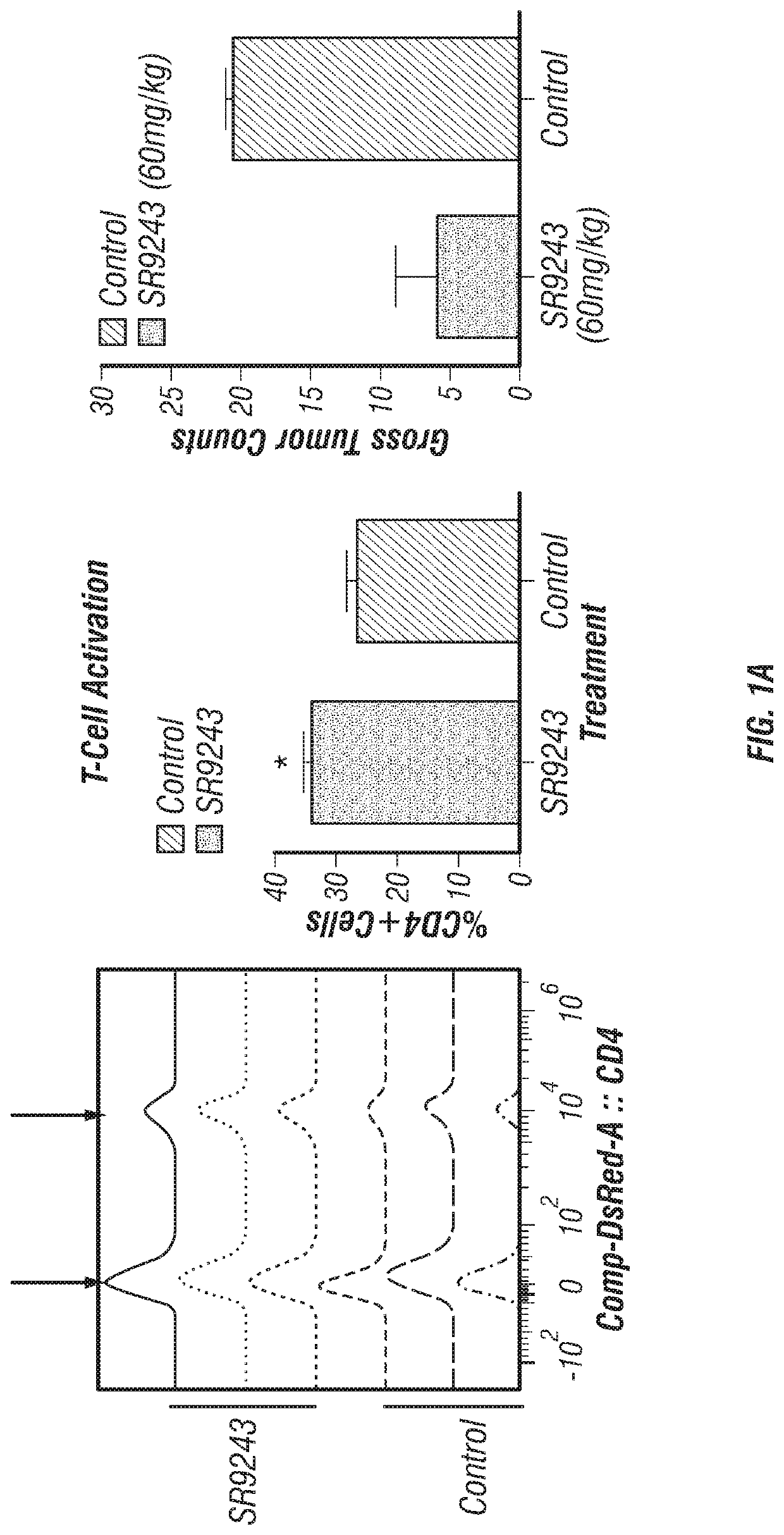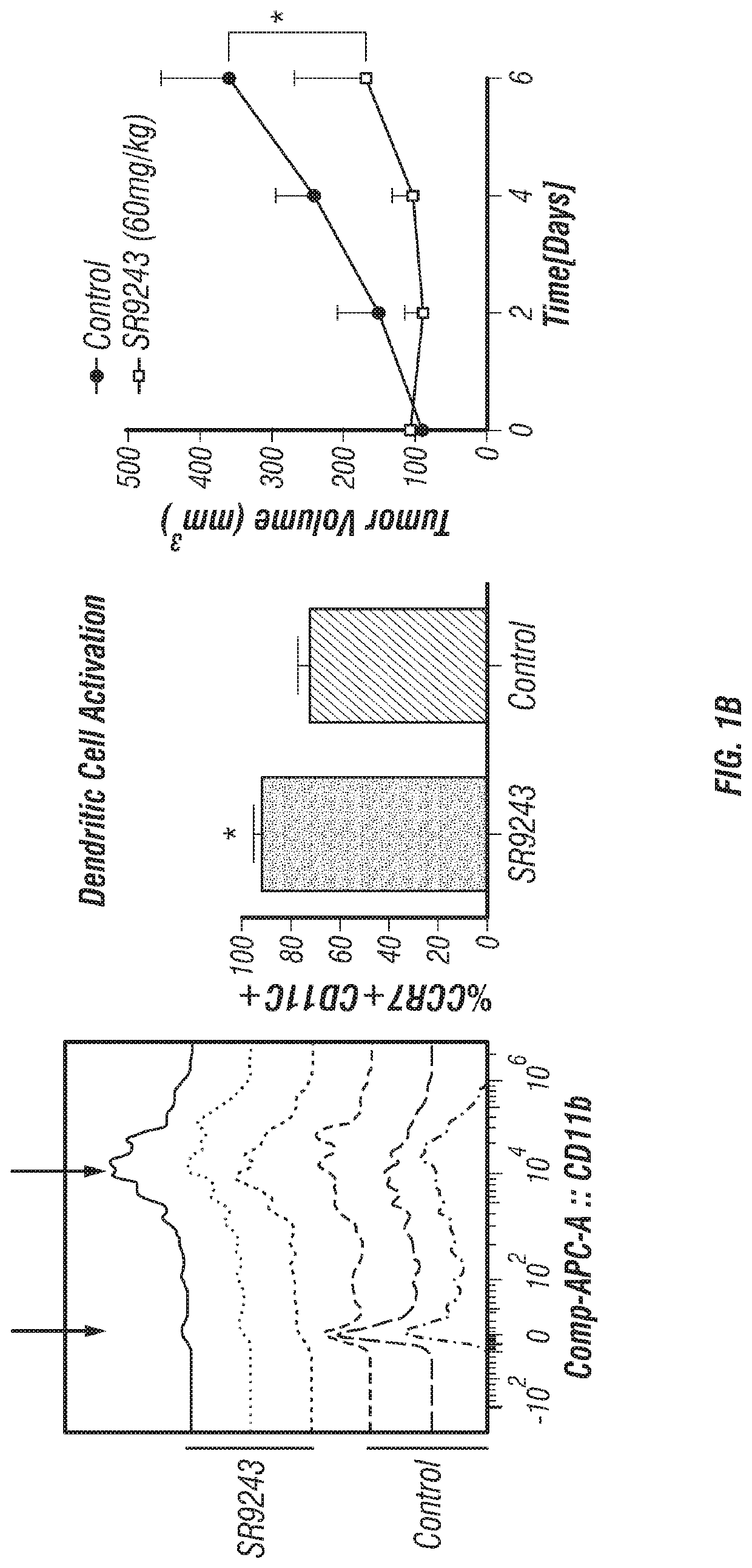Lxr inverse agonists for treatment of cancer
a liver x receptor and inverse agonist technology, applied in the field of cancer chemotherapy, can solve the problems of limited therapeutic application, limited clinically viable therapies that effectively block lipogenesis in vivo, and less energy efficient glycolysis compared to aerobic respiration, so as to inhibit glycolysis or lipogenesis, reduce liver x receptor activity, and improve the effect of cholesterol
- Summary
- Abstract
- Description
- Claims
- Application Information
AI Technical Summary
Benefits of technology
Problems solved by technology
Method used
Image
Examples
example 1
[0201]Biochemical NR—Cofactor Peptide Interaction Assay (TR-FRET) Assay (Life Technologies kit). Purified human LXRα-LBD (GST), LXRβ-LBD (GST), fluoroscein (FL)-labeled peptides, terbium (TB)-labeled anti-GST tag antibody, and all buffers were purchased from Life Technologies. All LXR assays were conducted in 384-well black medium-binding polystyrene assay plates (Greiner Bio-One). Test compound stock solutions and subsequent serial dilutions were prepared at 100× the final concentration in DMSO, and then were diluted to the final assay concentration of 2× in assay buffer and dispensed into assay plates. LXR-LBDs were added to assay plates and then a mixture of FL-peptide / TB-anti-GST was added to each well containing either a test compound or DMSO control for final concentrations of 2.5 nM LXRα-LBD, 5 nM LXRβ-LBD, 10 nM TB-anti-GST, and 250 nM FL-peptide. Assay plates were protected from light and incubated with gentle shaking for 3.5 hours at room temperature. The TR-FRET ratio (52...
example 2
[0205]Synthetic Procedures.
[0206]Compounds of the present invention that can be classified as di-substituted tetrahydroquinoline are summarized below. Compounds belonging to type A can be prepared from commercially available ester 1 and reaction with the requisite sulfonyl chloride as described in the literature (X) gives sulfonamide intermediate 1. Hydrolysis of the ester using an aqueous solution of a base such as lithium or sodium hydroxide gives the acid intermediate 2. Coupling of intermediate 2 with the requisite primary and secondary amines in the presence of an appropriate dehydrating agent gives compounds of type A. Compounds of type B were prepared using commercial starting material 2. Formation of the sulfonamide gives intermediate 3. Alternatively, acylation of 2 with the appropriate acid chloride or with a carboxylic acid using the appropriate dehydrating agent gives rise to amide intermediate 4. Performing a metal mediated cross coupling of intermediates 3 or 4 with an...
PUM
| Property | Measurement | Unit |
|---|---|---|
| pharmaceutical composition | aaaaa | aaaaa |
| tumor resistance | aaaaa | aaaaa |
| pH | aaaaa | aaaaa |
Abstract
Description
Claims
Application Information
 Login to View More
Login to View More - R&D
- Intellectual Property
- Life Sciences
- Materials
- Tech Scout
- Unparalleled Data Quality
- Higher Quality Content
- 60% Fewer Hallucinations
Browse by: Latest US Patents, China's latest patents, Technical Efficacy Thesaurus, Application Domain, Technology Topic, Popular Technical Reports.
© 2025 PatSnap. All rights reserved.Legal|Privacy policy|Modern Slavery Act Transparency Statement|Sitemap|About US| Contact US: help@patsnap.com



